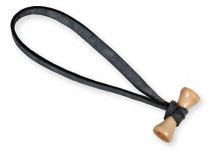Gimbal stabilizers have opened the floodgates for filmmakers to achieve cinematic camera moves with a single piece of equipment, rather than using complicated setups involving a bulky crane or a dolly track. Besides providing stability, gimbals also allow users to control movement in the pitch, pan, and roll axes.
By combining this level of control with the precise stabilization, you can pull off some great cinematic shots with ease. In the video below, Armando Ferreira showcases some of the ways a gimbal can be configured to help you get interesting-looking and visually appealing footage through some clever camera movements.
The first technique showcased in the video seems to be the simplest one as it emulates the motion of a camera crane/jib. To do this, you’ll need to invert the gimbal by turning it upside down so that it’s near the ground. All you have to do now is press record on your camera and gently raise the crane as if you’re using a jib.
If you want to add complexity to the move, consider using the joystick to adjust the pan and tilt on the gimbal on the fly. Another way would be to perform the jib move as your subject is walking. By doing so, you won’t have to worry about camera shake since the motors in the gimbal will compensate for most of the unwanted jitters.
The next technique shown in the video can be considered a rotating birds-eye-view shot. This technique can yield some stunning results when shooting from an elevated height, such as the second floor of a building or a bridge.
To set up the gimbal for this shot, you’ll need to turn the unit upside down again. If you’re using a Zhiyun Crane 2, set the gimbal mode to L. For other gimbals, you’ll need to find the equivalent setting. Once the gimbal mode is set, pan the gimbal head so that it is looking straight down.
Then trigger your camera to record and using your joystick, have the camera roll. The result is cinematic footage that looks down on your subject as the world seems like it’s spinning, which can create a different tone depending on the speed – slower roll for tension, faster roll for disorientation.
If you’re looking to create a new way to reveal a location or character, consider the next gimbal technique which has the camera start at a dutch angle and roll as the gimbal moves downwards. To perform this movement, use the joystick on your gimbal and roll the gimbal to one side, creating a dutch angle.
Next, raise the stabilizer and trigger the record feature of your camera. As you lower the device, gently roll the gimbal head to the other side. The use of a constantly rotating dutch angle is excellent for expressing the idea that something ominous is about to happen.
Considering that gimbals are excellent when it comes to video stabilization, popular effects such as the push-pull (vertigo effect) have been made easier to achieve. For those unfamiliar, the push-pull effect is when the camera moves away from the actor as the camera zooms at the same time. This gives the illusion that the background is either stretching out of or squeezing into the subject.
To do this with the gimbal, you’ll need to make sure your particular gimbal can control the zoom function of the camera. For instance, the Zhiyun Crane 2 as a follow focus dial that can be rigged to control the camera zoom, just as shown in the video.
Once you’ve found your means of controlling the zoom, all that’s left to do is to shoot your footage. In this case, you should start with the camera positioned in front of your actor. Then press the record button and as you carefully move backward, trigger your camera to zoom in at the same pace as your movement. If you’d like, you can choose to start from afar, and as you walk closer to your subject, you’ll need to zoom out.
The last effect featured in the video is a variation of the push-pull effect described previously. Rather than just moving backward and zooming in, use the joystick on the gimbal and have the head roll. This trick will further push the visual idea of disorientation as you’re manipulating the motion from multiple axes.
There you go! Now you know how to get more cinematic shots with your gimbal. If you have other creative tricks in mind, feel free to share those in the comments below.
[source: Armando Ferreira]
Order Links:
Zhiyun-Tech Crane-2 3-Axis Stabilizer with Follow Focus (B&H, Amazon)
DJI Ronin-S Single-Handed Gimbal (B&H)
Disclaimer: As an Amazon Associate and a participant in other affiliate programs, we may earn a small comission from qualifying purchases made through some of the links on this page - at no additional cost to you.



